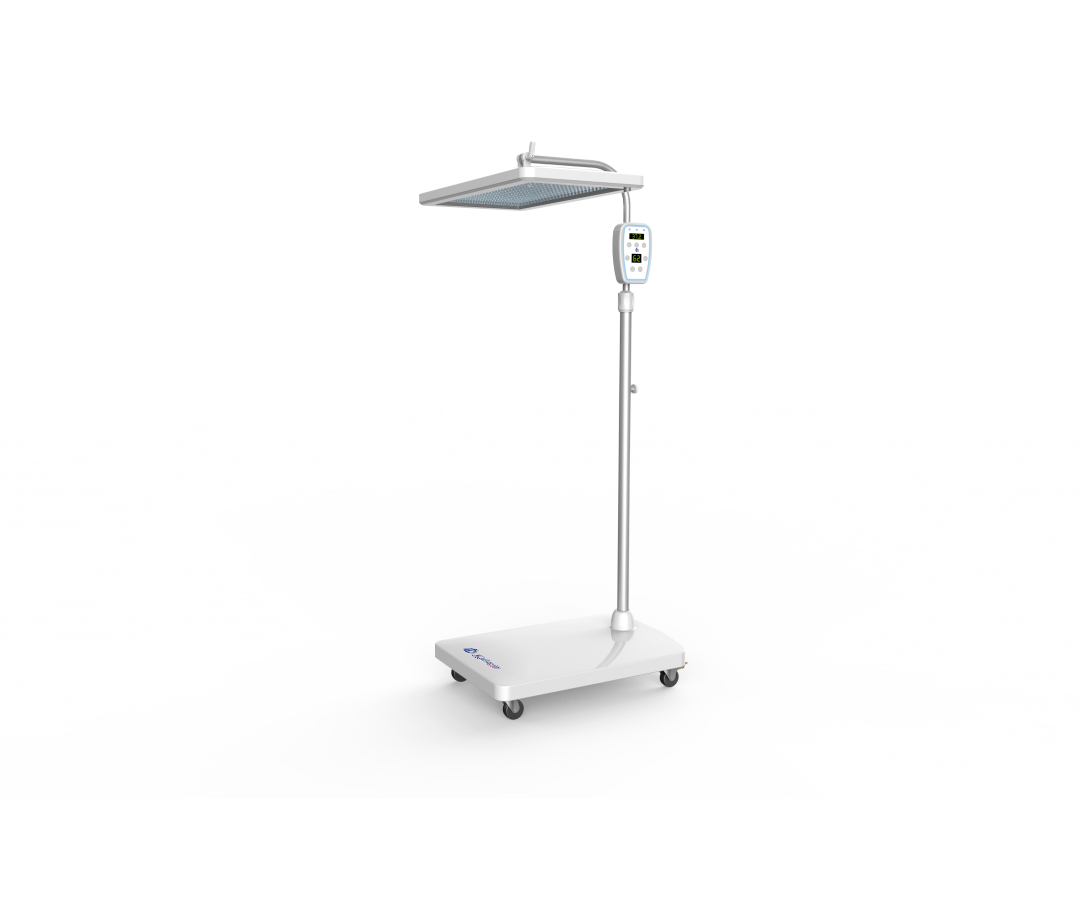Neonatal hyperbilirubinemia is a commonly known syndrome in neonates. It is characterized by an abnormally high level of bilirubin in the blood, which results in a complication for a healthy baby. This condition is thought to occur in about 10% of newborns. Neonatal hyperbilirubinemia often occurs in the first few days of life but is sometimes not detected until several weeks later.
High bilirubin in the blood can cause a number of symptoms, including jaundice (yellowish stools), heart defects, and learning disabilities. For this reason, it is necessary to promptly attend this syndrome to avoid these complications. There are alternative therapies with drugs and vitamin K that can also be considered, but in general, pediatricians opt for phototherapy to treat this syndrome for the reasons that will be discussed below.
As treatment, phototherapy for neonatal hyperbilirubinemia has been used successfully for many years. This therapy involves exposing the baby to special ultraviolet light that helps break down bilirubin levels. This light is emitted by lamps specially designed according to the age and weight of the baby. The amount of exposure time will be determined by the bilirubin level and the total treatment time will be determined by the physician.
What is the efficacy of phototherapy in treating neonatal hyperbilirubinemia?
Several studies have been conducted to examine the efficacy and safety of phototherapy. A 2000 study found that treatment with phototherapy is effective in lowering serum bilirubin levels. Another study found that the treatment is safe and has no significant side effects for the baby. This has allowed phototherapy to approach first-line treatment for neonatal hyperbilirubinemia.
In addition to lowering bilirubin levels, phototherapy can also help improve symptoms related to neonatal hyperbilirubinemia, such as poor sleep and irritability. One study found that babies treated with phototherapy had better rest and greater tranquility than those who did not receive treatment.
Phototherapy has been shown to be an extremely effective treatment for neonatal hyperbilirubinemia. Studies have shown that this therapy is a safe option that offers greater peace of mind for both the baby and his parents. Studies have also shown that this therapy is very effective in reducing, and eventually eliminating, high bilirubin levels. These findings suggest that phototherapy is a very healthy treatment for neonatal hyperbilirubinemia.
What are the precautions to consider when phototherapy is used to treat neonatal hyperbilirubinemia?
Despite the efficacy of phototherapy in treating neonatal hyperbilirubinemia, there are some aspects that should be considered before selecting it as treatment. Treatment with ultraviolet light should not be done unless necessary, and the amount and time of exposure should be closely monitored to reduce the risk of skin damage. It is important that parents and their baby are comfortable with the treatment and that all of their questions about the treatment are answered.
In conclusion, phototherapy for neonatal hyperbilirubinemia has been shown to be an effective and safe treatment. This therapy can significantly reduce bilirubin levels in the blood and improve related symptoms. Parents should be aware that treatment should be done with caution. Medical advice should be followed closely to ensure the effectiveness and safety of the treatment.
The effectiveness of Kalstein childhood bilirubin phototherapy units
The development of the Kalstein phototherapy units is designed to maximize the effectiveness of the treatment of neonatal hyperbilirubinemia, without the side effects that can arise from exposure to UV radiation. These units use LED lamps that have superior light efficiency and greater irradiance, which can also be regulated; and as generating little heat consume little energy. The irradiation time can also be controlled. These devices are for sale, and can be viewed on the websites HERE and HERE. For purchase options and prices, check on the same sites.

